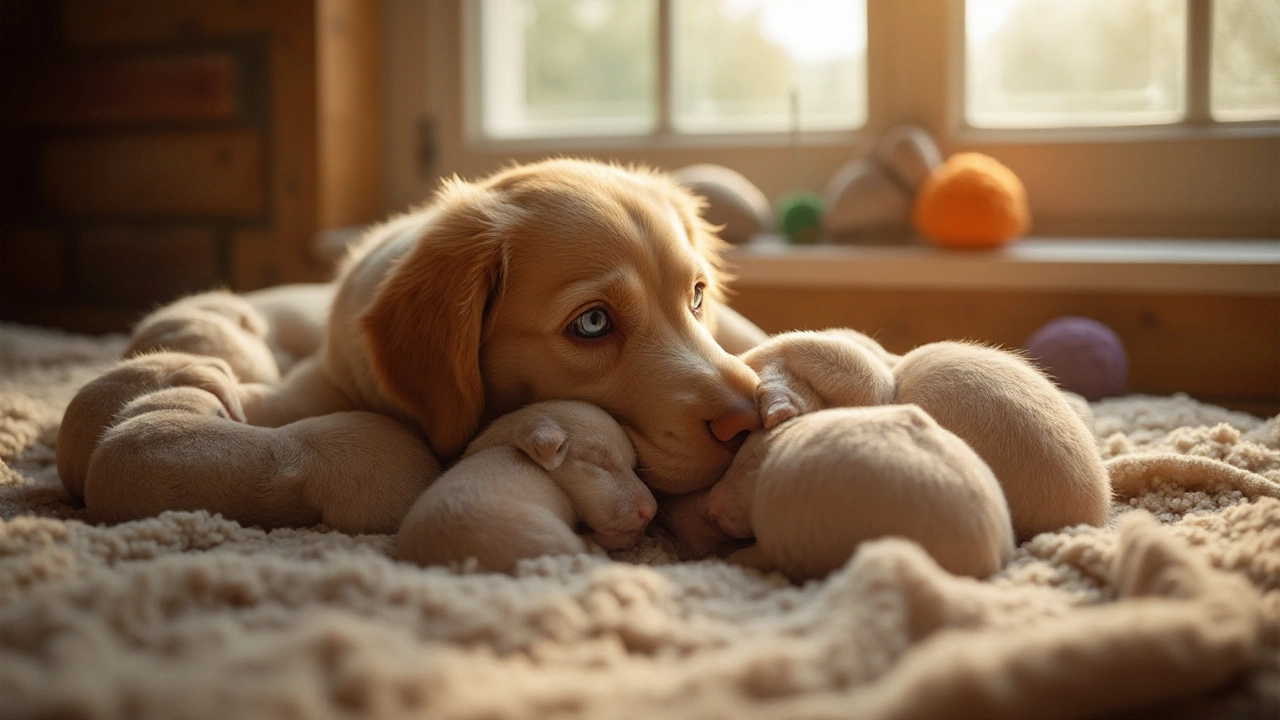Newborn Puppies: The Practical Guide Every Owner Needs
Bringing home a newborn puppy is exciting, but it can also feel overwhelming. You’ll want to know how to keep the tiny pup warm, fed, and safe while you figure out the long‑term plan. This guide breaks down the must‑do steps, the best products, and quick training tricks that work from day one.
Basic Care for Newborn Puppies
First things first – temperature. Puppies can’t regulate their body heat, so a warm, draft‑free area is non‑negotiable. A heated pad set to low or a warm water bottle wrapped in a towel works great for the first few weeks. Keep the bedding clean and dry; a soft blanket that you can wash often is ideal.
Feeding is the next big priority. If the mother is present, let her nurse; her milk has the right balance of nutrients and antibodies. If you’re bottle‑feeding, use a vet‑approved puppy formula and a nipple that mimics the mother’s flow. Feed every 2‑3 hours, even through the night, until the pups are about four weeks old.
When it comes to bathroom breaks, newborns can’t go on their own. Gently rub the pup’s genital area with a warm, damp cloth after each feed to stimulate elimination. Once they’re a week old, start introducing a soft puppy pad to get them used to a surface they can use later.
Health checks should happen early. Schedule a vet visit within the first week to confirm the puppies are gaining weight and to discuss vaccination timelines. The vet can also advise when to start de‑worming and any supplements you might need.
Safety in the home means puppy‑proofing. Remove cords, secure heavy objects, and block off any gaps in fences or staircases. A small playpen or a well‑ventilated crate provides a confined space that feels safe without being restrictive.
Training & Early Socialisation
Even newborns benefit from gentle handling. Spend a few minutes each day holding, petting, and talking to your pup. This builds trust and gets them used to human contact, which pays off later when you start formal training.
When the pups are about three weeks old, you can start short, calm sessions of crate training. Place the puppy in a cozy crate for a few minutes while you’re nearby, then let them out for a cuddle. Over time they’ll associate the crate with a safe spot, which is useful for bedtime and travel.
Chewing starts early, especially as teeth begin to erupt around four weeks. Offer safe chew toys – soft rubber rings or plush toys designed for puppies – to satisfy that instinct and protect your shoes. Our blog post Puppy Chew Toys: What Should I Give My Puppy to Chew On? lists the best options.
Biting is another common behavior. The post When Do Puppies Stop Biting? explains that most pups outgrow it by six months, but you can speed up the process by redirecting bites to toys and using a firm “no” when they bite skin.
Socialisation should begin as soon as the pups are vaccinated enough to explore safely. Gentle introductions to other vaccinated dogs, different surfaces, and various sounds help them grow into confident adults.
Finally, keep an eye on nutrition as they grow. Around eight weeks, transition to high‑quality puppy kibble, mixing it with a bit of wet food for texture. Our article When to Switch Puppy to Adult Food outlines the right timing for that switch later on.
With a warm spot, regular feedings, basic hygiene, and early socialisation, your newborn puppy will thrive. Stick to these simple steps, pick the right products, and enjoy watching your tiny bundle of joy grow into a happy, well‑behaved companion.
Understanding When to Touch Newborn Puppies
Newborn puppies are fragile and require careful consideration before being handled. This article explores the best practices for interacting with three-day-old puppies, including when and how to touch them safely. It also delves into the importance of the mother-puppy bond and the role that appropriate toys can play in stimulating the puppies' development. Tips for ensuring a safe and healthy environment for puppies are also included.
